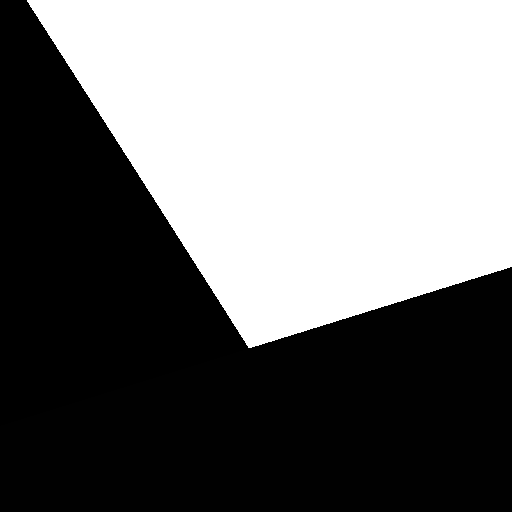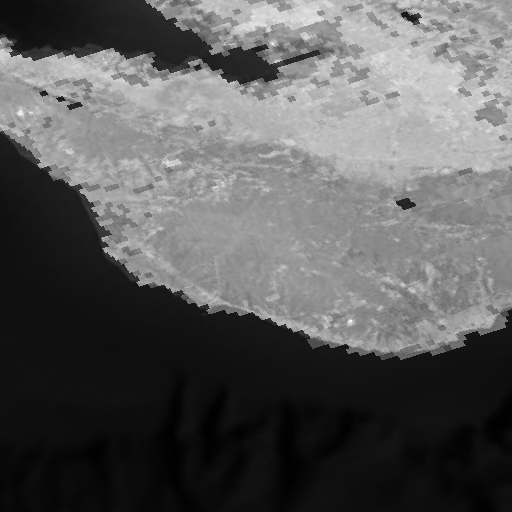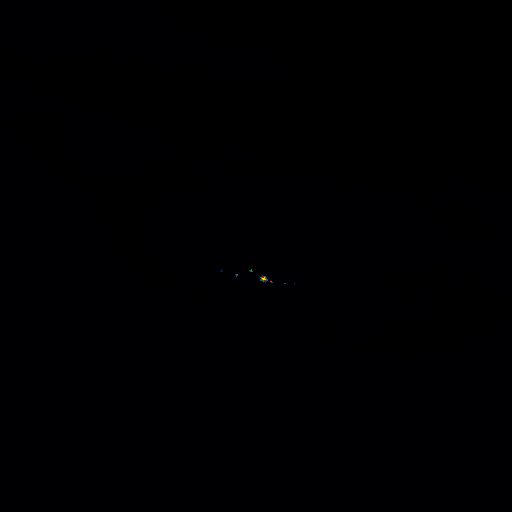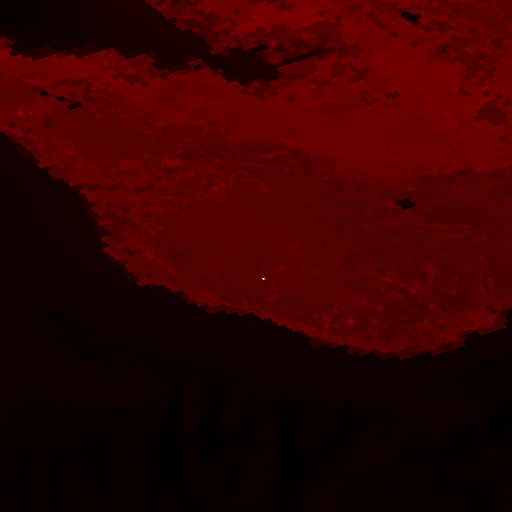Wildfire Imaging with EOIR
STK Premium (Air), STK Premium (Space), or STK Enterprise
You can obtain the necessary licenses for this tutorial by contacting AGI Support at support@agi.com or 1-800-924-7244.
Required Capability Install: For versions 12.10 and earlier of the STK software, this lesson requires the installation of the EOIR capability. For these versions of the software, the EOIR installer is included in the STK Premium software download, but requires a separate installation process. Read the Readme.htm found in the STK software install folder for installation instructions. You can obtain the necessary install by visiting https://support.agi.com/downloads or calling AGI support.
The results of the tutorial may vary depending on the user settings and data enabled (online operations, terrain server, dynamic Earth data, etc.). It is acceptable to have different results.
Capabilities covered
This lesson covers the following STK capabilities:
- STK Pro
- Electro-Optical Infrared Sensor Performance (EOIR)
Problem statement
Detecting wildfires early is critical. It enables you to quickly respond with a containment strategy. The GOES-17 satellite has cameras that look at both visible and infrared light. This makes the GOES-17 satellite a valuable tool for imaging the wildfires and seeing the differences between daytime images verses nighttime images. But how valuable is it? What can the satellite's cameras see? How can you get a better understanding of what you're seeing?
Solution
STK's EOIR capability models the detection, tracking, and imaging performance of Electro-Optical Infrared (EOIR) sensors for Earth science, space situational awareness, and missile defense applications. You can use the results of EOIR to support concept design, engineering, test, and operations. In this tutorial, you will model the GOES-17 satellite and model images from orbit with texture maps. You will also observe the results in the sensor data.
What you will learn
Upon completion of this tutorial, you will be able to:
- Model a visible and an infrared sensor
- Load in both reflectance and temperature maps
- Understand sensor scenes
Video guidance
Watch the following video. Then follow the steps below, which incorporate the systems and missions you work on (sample inputs provided).
Please note, the video refers to files accessed from the STK Data Federate (SDF). Any files previously located on the SDF are now available from agi.com. Please follow the written steps in this tutorial to download the files.
Creating a new scenario
Create a new scenario with a run time of half a day.
- Launch STK (
 ).
). - Click .
- Enter the following in the STK: New Scenario Wizard:
- Click to accept your settings.
- Click Save (
 ) when the scenario loads. A folder with the same name as your scenario is created for you.
) when the scenario loads. A folder with the same name as your scenario is created for you. - Verify the scenario name and location shown in the Save As window.
- Click .
| Option | Value |
|---|---|
| Name | EOIR_Wildfires |
| Start | 20 Aug 2025 16:00:00.000 UTCG |
| Stop | + 0.5 days |
Save (![]() ) often!
) often!
Downloading required files
This lesson uses texture map files that you will need to download following the steps below. Later in the lesson, you will learn how to make your own texture maps as well.
- Download the zipped folder here: https://support.agi.com/download/?type=training&dir=sdf/help&file=EOIR_Wildfire_Imaging.zip
If you are not already logged in, you will be prompted to log in to agi.com to download the file. If you do not have an agi.com account, you will need to create one. The user approval process can take up to three (3) business days. Please contact support@agi.com if you need access sooner.
- Navigate to the downloaded folder.
- Right-click on EOIR_Wildfire_Imaging.zip.
- Select Extract All...
- Set the Files will be extract to this folder: path to be within your scenario folder (e.g. C:\Users\<username>\Documents\STK_ODTK 13\EOIR_Wildfires\EOIR_Wildfire_Imaging).
- Click Extract.
- Go to your scenario folder.
- The following files will be in the EOIR_Wildfire_Imaging folder:
- ReflectanceMap.csv
- TemperatureMap.csv
Verifying EOIR is installed
Ensure that EOIR is installed on your computer.
- Extend the View menu if you do not see the EOIR toolbar (
 ).
). - Select the Toolbars option.
- Select EOIR.
Inserting the GOES-17 satellite
The GOES-17 satellite is one satellite in the Geostationary Observational Environment system, which monitors weather events. This particular satellite orbits over the western hemisphere. You will use it as the platform for your EOIR sensor.
- Select to insert a Satellite (
 ) object using the Orbit Wizard (
) object using the Orbit Wizard ( )method.
)method. - Click .
- Set the Type to Geosynchronous.
- Rename the satellite GOES_17.
- Set the Subsatellite point to -137.2 deg.
- Click .
The GOES-17 satellite will stay in its assigned slot over time with station keeping. You inserted it in the scenario with the Orbit Wizard so you could set the specific orbital parameters. Had you inserted it from the Standard Object Database (SOD), then the TLE results would change over time due to consistent updates and station keeping.
Inserting a ground site
You will focus on the Big Basin Redwood State Park, which was unfortunately the site of a wildfire in 2020. You will use this ground site as a direction to point the sensor.
- Select to insert a Place (
 ) object using the Search by Address.
) object using the Search by Address. - Click .
- Search for the place object by entering "Big Basin" into the search criteria.
- Select the site with Latitude 37.17250 deg and Longitude -122.223 deg.
- Click .
Inserting a Sensor object
Add a sensor and place it on the GOES-17 satellite.
- Insert a Sensor (
 ) object using the Define Properties (
) object using the Define Properties ( ) method.
) method. - Click .
- Attach the sensor to the GOES_17 satellite.
- Click .
Defining the sensor properties
By default, a sensor is mounted on a satellite pointed along a fixed direction. Using the targeted option, you can center the sensor's focus on the Big Basin State Park. That changes the angle of the sensor.
- Go to the Basic - Pointing page.
- Set the Pointing Type to Targeted.
- Move (
 ) Big_Basin_Redwoods_State_Park_CA to the Assigned Target list. This is the point of focus for the sensor.
) Big_Basin_Redwoods_State_Park_CA to the Assigned Target list. This is the point of focus for the sensor.
Setting the EOIR settings
You defined the point behavior of the sensor. Next, you can address the Electro-Optical Infrared component of this mission.
EOIR settings - Spatial
Set the EOIR spatial parameters for the sensor.
- Go to the Basic - Definition page.
- Set the Sensor Type to EOIR.
- Ensure the Spatial tab is selected and set the following options. Leave all others as the default:
- Set the Processing Level to Radiometric Input.
- Click .
| Option | Value |
|---|---|
| Input | Field-of-View and Number of Pixels |
| Field of View - Horizontal Half Angle | 0.05 deg |
| Field of View - Vertical Half Angle | 0.05 deg |
EOIR settings - spectral
The GOES-17 satellite has 16 spectral bands that look at visible, NIR, and IR bands. You will begin this study looking at the visible components first. For simplicity, you will use the default settings and look at the visible waveband (0.4-0.7 um).
- Locate the Spectral Band Edge Wavelengths field. Review the settings.
- Low is set to 0.400 um.
- High is set to 0.700 um.
EOIR settings - optical & radiometric
You will be using many of the default settings to highlight how to get an image quickly. Take the moment now to review the optical and radiometric tabs, but do not make any changes.
- Select the Optical tab.
- Review the settings but leave the default values.
- Select the Radiometric tab.
- Review the settings but leave the default values.
- Click .
- Rename the sensor EOIR_Visible.
Generating a sensor scene
Now that your camera has been set up, review what the sensor scene sees.
- Select the EOIR_Visible (
 ) in the Object Browser.
) in the Object Browser. - In the EOIR toolbar, click the EOIR Sensor Scene (
 ) button to generate an image that represents the sensor output.
) button to generate an image that represents the sensor output.

Generating a sensor scene with greater detail
This first image is not particularly meaningful. You can dial up the fidelity by setting the scene details to Fine.
- Right-click the sensor scene and select Details...
- Set the Scene Detail to Fine. This shows a higher resolution of the Globe.
- Click .

The mission thus far uses the built-in globe imagery. You can dial up the fidelity even further by creating and loading in custom reflectance and temperature maps.
Using texture maps
In this lesson, you use two types of texture maps: reflectance maps and temperature maps. Although you will learn how to create your own maps, we provided example files for download at the beginning of this lesson. The downloaded texture maps have already been converted. They utilize the empirical line method to calculate and create data files. They are generated from Bing data, which only has red, green, and blue data. You will use the data you have available and extend it to the wavebands used in this study.
Creating your own texture maps with MATLAB
For the purpose of providing background, here is how you can make your own texture maps.
These steps require access to MATLAB to complete. If you do not have MATLAB, you can skip this section and use the reflectance and temperature maps that you downloaded at the beginning of this lesson.
- Use the snap frame to capture an image of the area of interest. Try to have the corner points of your area of interest approximately match these corner points:
- Make note of the latitude and longitude of your image's corner points.
- Save your image as test.jpg.
- Note your image's file path.
- Copy the code below into MATLAB:
- Replace
FilePath1with the location in your file directory where you saved test.jpg. - Replace
FilePath2with the location in your file directory where you want to save MyTextureMap.csv. - Run the MATLAB code to generate your texture map from test.jpg.
| Point | Latitude (deg) | Longitude (deg) |
|---|---|---|
| NW Corner | 37.69591 | -122.88801 |
| NE Corner | 37.69591 | -121.46507 |
| SW Corner | 36.67721 | -122.88801 |
| SE Corner | 36.66721 | -121.46507 |
a=imread('C:\FilePath1\test.jpg');
b=mean(a,3);
imagesc(b)
b=b/max(b(:));
csvwrite('C:\FilePath2\MyTextureMap.csv',b);
Using a temperature map
For the purposes of this lesson, you are provided with an example temperature map that was created by generating hot points (or "wildfires") on the texture map. This was done with a script that used a Gaussian blob generator and the sample MATLAB code to create the file. Although the fire generator script is not available, you can use the file generated by the script.
Importing a reflectance map
After downloading the example files, or creating your own, follow the steps below to load them into the scenario for your visible camera to view. You'll first examine the reflectance map.
- Click the EOIR Target Configuration (
 ) button on the EOIR toolbar.
) button on the EOIR toolbar. - Click the button.
- Go to the Texture Maps page.
- Insert a New Texture Map.
- Set the following:
- Rename the map to "Reflectance".
- Set the Type to Reflectance.
- Change the Value drop-down to File.
- Browse to and load in the ReflectanceMap.csv file using the ellipsis (
 ).
). - Set the corner points using the values from the table below.
- Click .
- Click to close the EOIR Configuration window.
| Point | Latitude (deg) | Longitude (deg) |
|---|---|---|
| NW Corner | 37.69591 | -122.88801 |
| SW Corner | 36.66721 | -122.88801 |
| NE Corner | 37.69591 | -121.46507 |
| SE Corner | 36.66721 | -121.46507 |
Revisiting the EOIR Sensor Scene
If closed, reopen the EOIR sensor scene. Otherwise, if it was open, then the scene will automatically update. Examine the changes.
You can see a change in the sensor scene, you now have more detail on of the mountains and the region as a whole. Continue developing your mission and load in your temperature map next.

Importing a temperature map
You'll now examine the temperature map. After downloading the example files, or creating your own, follow the steps below to load them into the scenario to configure your visible camera to view.
- Click the EOIR Target Configuration (
 ) button on the EOIR toolbar.
) button on the EOIR toolbar. - Click .
- Go to the Texture Maps page.
- Copy the Reflectance map.
- Paste the Reflectance map.
- Set the following:
- Name this map "Temperature".
- Set the Type to Temperature.
- Browse to and load in the TemperatureMap.csv file using the ellipsis (
 ).
). - Since you copied the early texture map, you already have the corner points entered in. You do not need to set them again.
- Click .
- Click to close the EOIR Configuration window.
Reviewing the sensor scene
Review the resulting sensor scene then answer the questions below.

Why are there not any obvious changes in the display? You've loaded in a temperature map, however, you're looking at visible light! It's daytime and it's bright outside, so the fire is not easy to see. Look at long wave infrared light with your sensor.
EOIR Sensor
To simplify things, you will copy your existing sensor and make adjustments to the spectral characteristics. The GOES-17 camera does look at infrared light, you won't look at a specific band of the camera, but instead will broadly examine thermal infrared.
- Copy the EOIR_Visible (
 ) sensor in the object.
) sensor in the object. - Paste the sensor.
- Rename the sensor EOIR_LWIR.
- Open the EOIR_LWIR (
 ) sensor properties.
) sensor properties. - In the Spectral tab, locate the Spectral Band Edge Wavelengths field.
- Set the following values:
- High is set to 12.000 um.
- Low is set to 8.000 um.
- Click .
Generating a sensor scene
Now that your camera has been set up, review what the sensor scene sees.
- Select the EOIR_LWIR (
 ) in the Object Browser.
) in the Object Browser. - Click the EOIR Sensor Scene button (
 ) in the EOIR toolbar to generate an image that represents the sensor output.
) in the EOIR toolbar to generate an image that represents the sensor output. - Give STK a moment to generate the scene.
- Right-click the sensor scene and select Details...
- Set the Scene Detail to Fine. This shows a higher resolution of the globe.
- Set the Color Map to BGRY.
- Click .

Reviewing the sensor scene
Review the resulting sensor scene and answer the questions below:
- What changes do you see?
- Is there a way to view these wildfires with your visible camera?
In the image, you see the hotspots of the wildfires. They're clearly visible for a few reasons. You're no longer seeing the bright daytime light because you're not looking at that part of the spectrum. The sensor scene also has automatic gain control and you didn't change the radiometric settings. On your own, explore changing the radiometric settings and seeing their impact.
You can see these wildfires with a LWIR camera, but is there any way you can utilize your earlier built camera that looked at visible light? Reexamine the region, but at night.
Adjusting the scenario
Set the scenario to a time at night. This way you can see how the previously loaded reflectance and temperature maps appear at night.
- Set the scenario time to 21 Aug 2025 03:00:00.000.
- Save (
 ) the scenario.
) the scenario.
Generating a sensor scene
Now that your region of interest is experiencing night, review what the sensor scene sees.
- Select the EOIR_Visible (
 ) in the Object Browser.
) in the Object Browser. - In the EOIR toolbar, click the EOIR Sensor Scene (
 ) button to generate an image that represents the sensor output.
) button to generate an image that represents the sensor output. - Give STK a moment to generate the scene.
- Right-click the sensor scene and select Details...
- Set the Color Map to Red 2.
- Click .

Review the sensor scene
Review the resulting sensor scene. What changes do you see?
You're now looking at the scenario at night. Without daylight, the wildfire hotspot will light up in the scene!
Conclusion
Your goal in this mission was to understand what a satellite (GOES-17) would see when looking at wildfires. You modeled the satellite and the cameras on it. You also loaded in texture maps, specifically the reflectance and temperature maps, to model the region at a higher resolution and to see the wildfires. You found you can't see the hotspots with a visible camera during the day; however, you can see them with a LWIR camera. You can also see the wildfires when you look at the scenario at night.
Save your work
- Close any reports, graphs, or tools that remain open.
- Save (
 ) your work.
) your work.
On your own
In this lesson, you simplified the bands you looked at. The GOES-17 satellite looks at 16 bands. On your own, explore what each band would see and how the sensor scene changes. Take the time to explore the radiometric settings and note how your scene changes with different sensitivities.